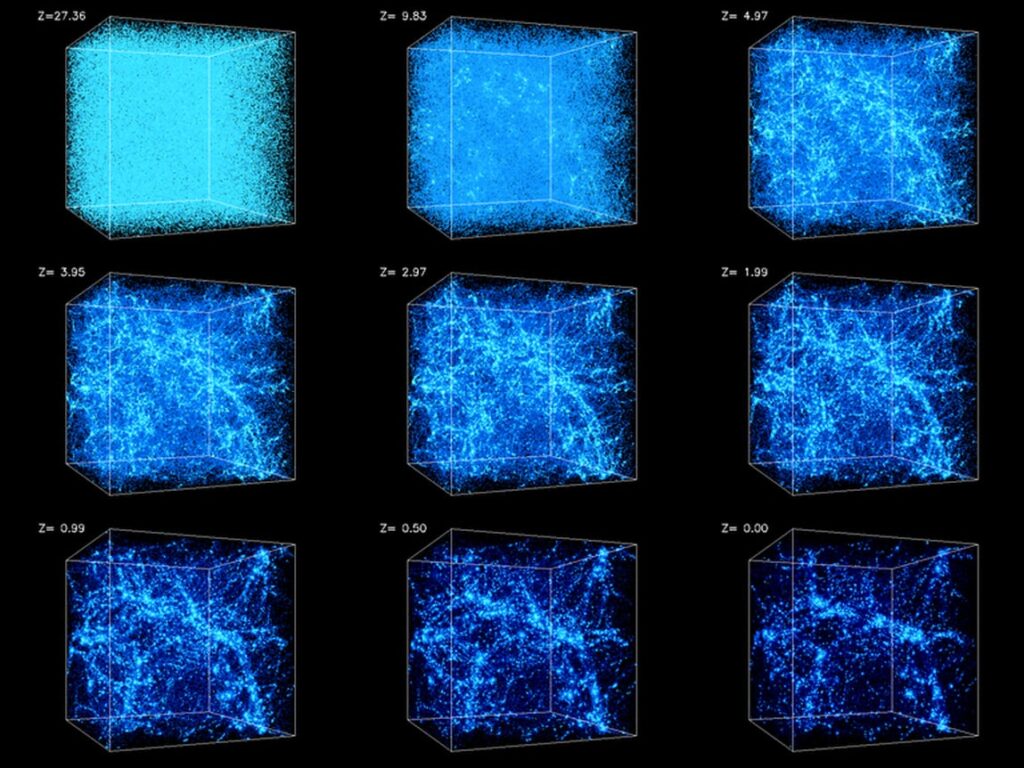
A groundbreaking mathematical model developed by Dr. Leonardo Giani from the University of Queensland is reshaping our understanding of cosmic evolution. For nearly a century, cosmologists have adhered to an oversimplified view of the universe, treating matter as uniform particles that do not interact. This model, although useful for explaining phenomena like the Big Bang and the expansion of space, overlooks the complex reality of how matter behaves. Stars cluster in galaxies, matter collapses into black holes, and vast voids exist throughout space, all while interacting through gravitational forces and other influences.
With data from the Dark Energy Spectroscopic Instrument (DESI), which can measure the universe up to 11 billion light-years away, Giani and his team have created a model that accounts for these intricate structures and their effects on cosmic evolution. This innovative framework could significantly enhance our grasp of how the universe functions.
Insights from Complex Structures
Traditional cosmological models assume a uniform distribution of matter, but the reality is far more complicated. Massive structures such as galaxy clusters exert gravitational forces that pull matter inward, while enormous voids—regions nearly devoid of matter—continue to expand. For over three decades, scientists have grappled with understanding the influence of these contrasting forces on the universe’s overall behavior. Often, they have resorted to speculative theories involving new physics to explain these complexities.
Giani’s new model provides a mathematical approach to quantify how existing structures impact cosmological measurements. The team identified two crucial parameters: the minimum size required for a void to affect observations and the minimum size for a collapsing region to have influence. When they plotted independent datasets against these parameters, they uncovered a surprising result. Instead of clustering in a specific region as predicted by the standard model, the data overlapped in a different area entirely. This suggests that large voids are responsible for several anomalous behaviors observed in astronomical measurements.
Perhaps the model’s most significant implications lie in its ability to address two major issues in modern cosmology: Hubble tension and dynamical dark energy. Hubble tension refers to the discrepancy found between two different methods of measuring the universe’s expansion rate, which yield conflicting results. The reason for this discrepancy remains an open question. Meanwhile, the concept of dynamical dark energy posits that the mysterious force driving cosmic expansion could be weakening over time.
A Shift in Understanding
Previous efforts to resolve these issues often generated new contradictions. In contrast, Giani’s model offers an elegant solution. The apparent weakening of dark energy may simply reflect our improved understanding of the universe’s complexity rather than necessitating new physics. The model indicates that there exists a specific region where Hubble tension disappears altogether—not due to new theories, but because it accounts for the actual structures influencing our measurements.
When the research team examined whether the universe’s complexity was evident in the DESI data, they found a clear affirmative response. This represents a fundamental shift away from attempting to fit observations into overly simplified models. Instead, it embraces the true complexity of the universe.
The findings, published in Physical Review Letters, suggest that many of the current mysteries in cosmology might not arise from exotic new physics but from a failure to accurately account for the lumpy, interconnected reality of the universe we inhabit. This new approach not only enhances our understanding of cosmic evolution but also encourages a reevaluation of existing theories in light of empirical data.
As researchers continue to explore these insights, the implications for our understanding of the universe could be profound, potentially transforming fundamental concepts in cosmology for years to come.







